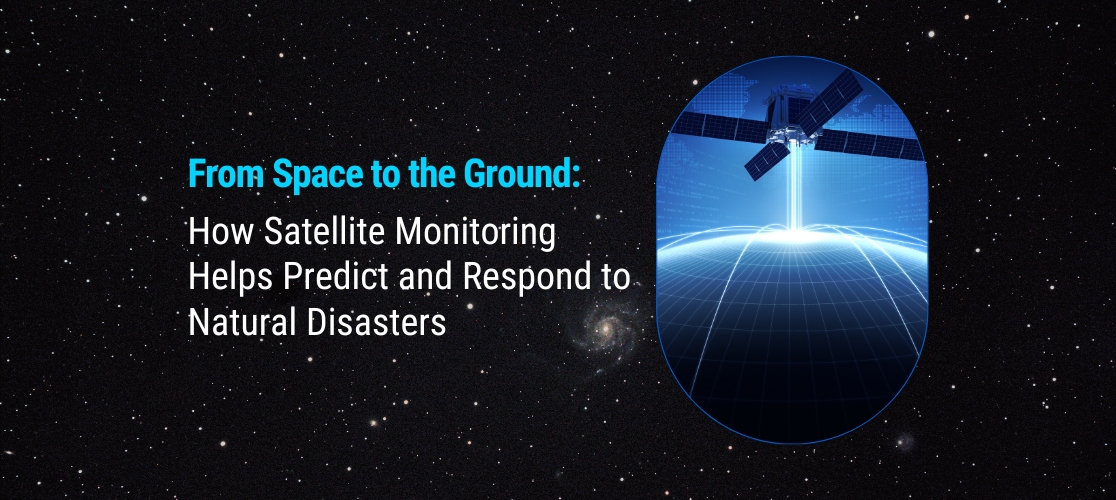04 April 2023
From Space to the Ground: How Satellite Monitoring Helps Predict and Respond to Natural Disasters

Natural disasters, such as hurricanes, earthquakes, floods, and wildfires, can cause significant damage to infrastructure and put people’s lives at risk. Early warning systems and response plans can help minimise the impact of these disasters. Satellite monitoring plays a critical role in predicting and responding to natural disasters. In this article, we will explore how satellite monitoring can help predict and respond to natural disasters.
Early warning systems One of the most important roles of satellite monitoring is to provide early warning systems. For example, weather satellites can detect the formation of hurricanes and typhoons in the ocean, allowing authorities to issue warnings and evacuate people from the affected areas. Earthquake detection satellites can detect seismic activity in real-time, enabling authorities to warn people and take necessary precautions.
Real-time monitoring Satellites can provide real-time monitoring of natural disasters, such as floods, wildfires, and landslides. In the case of floods, satellites can detect rising water levels, providing information on the affected areas and the severity of the situation. This information can help authorities respond quickly and allocate resources to the affected areas. Satellites can also monitor wildfires, providing information on the location and extent of the fire. This information can help authorities deploy firefighting resources more effectively.
Damage assessment After a natural disaster, satellite monitoring can help assess the damage and plan the response. Satellites can capture images of the affected areas, providing information on the extent of the damage. This information can help authorities prioritise the allocation of resources and plan the recovery efforts. In the case of earthquakes, satellites can capture images of the affected buildings, providing information on the damage and helping authorities assess the safety of the buildings.
Infrastructure monitoring Satellite monitoring can also help monitor critical infrastructure, such as dams and bridges, and identify potential issues. For example, satellites can detect changes in water levels near dams, providing information on potential breaches or failures. Similarly, satellites can detect changes in the terrain near bridges, providing information on potential landslides or other issues.
Climate monitoring Finally, satellite monitoring can help monitor the climate and provide information on climate patterns that could lead to natural disasters. For example, satellites can monitor ocean temperatures, providing information on the potential formation of hurricanes and typhoons. Satellites can also monitor weather patterns, providing information on the potential for droughts or floods.
In conclusion, satellite monitoring plays a critical role in predicting and responding to natural disasters. It can provide early warning systems, real-time monitoring, damage assessment, infrastructure monitoring, and climate monitoring. The information provided by satellite monitoring can help authorities respond quickly and effectively to natural disasters, minimising the impact on people’s lives and infrastructure.
